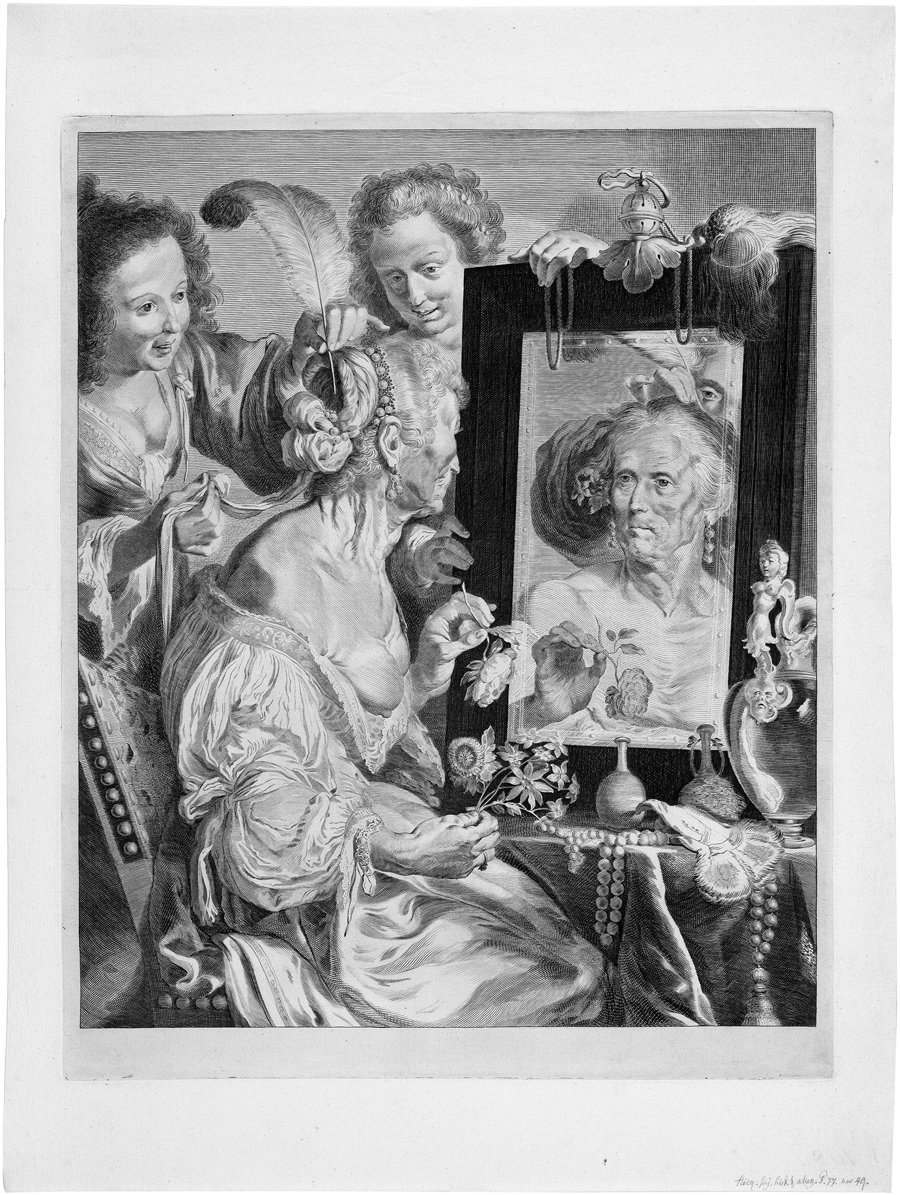Loading the page ...
Jeremias Falck
(c. 1619–1677, Gdansk)
The Ageing Wanton. Engraving. 37 x 30,4 cm. Block 156 I (of II), Hollstein 156. Watermark: Crowned Strasbourg fleur-de-lys coat of arms.
This lavishly presented composition reproduces a painting by Bernardo Strozzi, which was in the 17th century erroneously given to Johann Liss and used to be part of the famous Cabinet of two respected Amsterdam merchants, Gerard Reynst (1599–1658) and Jan Reynst (1601–1646), who maintained intensive commercial relations with Italy in the first half of the 17th century and had themselves lived in Venice for a longish period. The heart of their collection was an impressive ensemble of paintings by Italian masters of the Late Renaissance such as Parmigianino, Correggio, Titian, Lotto and Schiavone, several of which had been the property of the Venetian nobleman Andrea Vendramin. Moreover, works by contemporary Italian artists such as Guercino, Reni and Fetti were also represented in the Cabinet.
Shortly before his death Gerard Reynst planned to publish an album of prints reproducing the paintings of his collection. To this end he secured the support of such recognized engravers as Cornelis Visscher, Jacob and Theodor Matham and Schelte Adams Bolswert. Another artist recruited for the purpose was Jeremias Falck, who could point to a respectable career and enjoyed an international reputation as a reproductive engraver. The artist had lived and worked in Paris from 1639 to 1645, where he was greatly influenced by the engraving technique of Robert Nanteuil and worked for such prestigious publishers as Le Blond, Mariette and Langlois. Between 1649 and 1655 Falck stayed in Stockholm, where he owed his position as engraver to the Swedish court with his own private workshop in the royal castle to the patronage of Queen Christine. In about 1656 Falck went to Amsterdam to help work on the project of the Cabinet de Reynst. He continued to do so until the death of his client in 1658. The cost of this undertaking must have been significant when one considers that Falck, who produced a total of eighteen engravings, received a fee of 2,600 guilders. The collection of engravings was published posthumously by Reynst’s widow under the title Variarum Imaginum a celeberrimis Artificibus pictarum Caelaturae...
Falck’s technically sophisticated engraving technique brilliantly reproduces the morbid refinement of the vanitas theme. At a dressing table bearing precious objects we see an old woman at her morning toilet. She wears an ornate, very low-cut gown out of which her shrivelled breasts project in an almost repulsive manner. A maidservant is in the act of sticking an ostrich feather in her elaborately coiffed hair, while the woman herself is holding a rose and other flowers in both hands with a view to enhancing her seductiveness. She studies her reflection critically, although the sight of her gaunt, wrinkled face and faded charms can give her little cause for comfort. Yet her vanity makes her blind to her own physical decay, thus giving us a cautionary example of human folly.
A superb, differentiated early impression, before the inscription and before the artist’s name; with even margins around the platemark. In impeccable condition.
